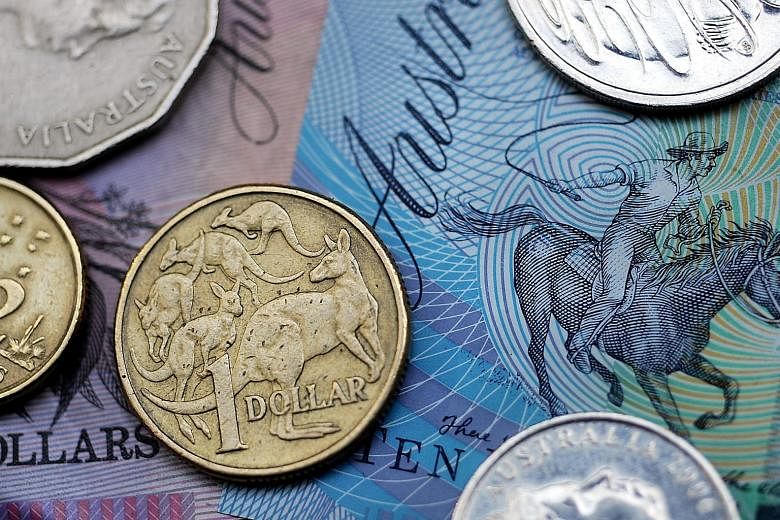SYDNEY (BLOOMBERG) - It's one of the first rules of economics: make a product cheaper, and people will buy more. Things aren't playing out that way Down Under.
A 34 per cent fall in the value of the Aussie dollar to a six-year low of about 72 US cents has done little to revive exports, which now cost less for international buyers. Australia posted its widest-ever trade deficit in April. Analysts predict four-fifths of the nation's biggest listed exporters will report shrinking revenues this year, data compiled by Bloomberg show.
"To get the levels of growth Australia needs you have to have exports," said Annette Beacher, head of Asia-Pacific research at TD Securities Inc. in Singapore. "Non-mining business investment isn't coming to the party and monetary policy isn't really sparking. Hopefully the currency at 72 cents, 73 cents will make a difference."
The Aussie bought 73.98 cents as of 1 pm on Monday in Sydney.
Shares in Orica Ltd. fell the most in seven years on Friday after the mining explosives maker wrote off as much as A$1.65 billion (S$1.69 billion). Resource giants Rio Tinto Group and BHP Billiton Ltd. - among the worst performers in Australia's credit-default swap index this year - are seeing revenue shrink after iron ore and coal prices dropped enough to overwhelm the benefits of increased volumes.
Iron ore and coal, which account for about 35 per cent of Australian exports, have seen prices decline 73 per cent and 57 per cent respectively from their peaks at the start of 2011.
Rio Tinto, the country's biggest producer of iron ore, said Thursday that revenues from the steelmaking material fell 40 per cent from a year earlier in the six months to June even as production rose 12 per cent to 123 million metric tons.
Orica forecast net profit in the year ending September will be 10 per cent to 15 per cent less than analysts' estimates. A spokesman for Rio referred to half-year results and declined to comment further. Orica spokeswoman Sam Stevens wouldn't comment.
"Pretty much all Australia's exports are heavily commodity-dependant," Chidu Narayanan, chief Asia economist at Standard Chartered Plc, said by phone from Singapore. "We don't really see too much of a bounce-back in commodity prices in the near term, so the export outlook does look subdued."
Devaluations can help economies recover from downturns. Domestic consumers should buy fewer goods from overseas, while exporters should see better demand as their overseas prices are reduced by the weaker currency. The British pound's 31 per cent fall in the 12 months from its 2008 peak was accompanied by a 22 per cent trade-deficit narrowing.
The same dynamic has yet to play out in Australia. While the dollar fell 20 per cent from its 2014 peak to July 1, the trade deficit has grown 20 per cent wider.
Demand for Australian commodities looks weaker, the central bank said in its quarterly monetary policy statement on Friday. Chinese steelmakers who count Australian iron ore and coal as key raw materials are facing a "more subdued" demand outlook, the Reserve Bank of Australia said.

